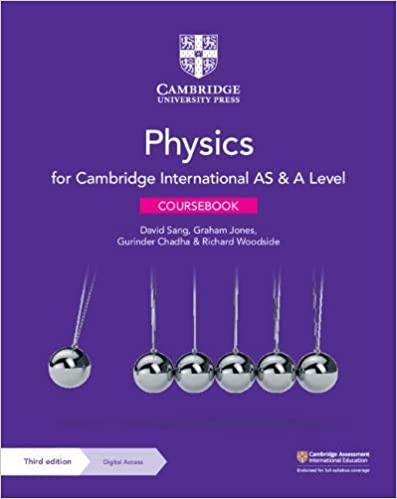a i. Define potential energy. ii. Identify differences between gravitational potential energy and elastic potential energy. b.
Question:
a i. Define potential energy.
ii. Identify differences between gravitational potential energy and elastic potential energy.
b. Seawater is trapped behind a dam at high tide and then released through turbines. The level of the water trapped by the dam falls 10.0 m until it is all at the same height as the sea.
i. Calculate the mass of seawater covering an area of 1.4 × 106 m2 and with a depth of 10.0 m. (Density of seawater = 1030 kg m−3.)
ii. Calculate the maximum loss of potential energy of the seawater in i when passed through the turbines.
iii. The potential energy of the seawater, calculated in ii, is lost over a period of 6.0 hours. Estimate the average power output of the power station over this time period, given that the efficiency of the power station is 50%.
Step by Step Answer:

Cambridge International AS And A Level Physics Coursebook
ISBN: 9781108859035
3rd Edition
Authors: David Sang, Graham Jones, Gurinder Chadha, Richard Woodside





